Madrid's Historical Heartbeat: A Timeless Journey
Explore Madrid's rich history and culture through its iconic landmarks in this immersive walking tour.
Time
2 Hours
Stops
8 Places
Distance
2.4 km
Puerta del Sol
As the heart of Madrid, Puerta del Sol is a bustling public square that has witnessed many significant historical events, making it an ideal starting point for our history-focused tour.
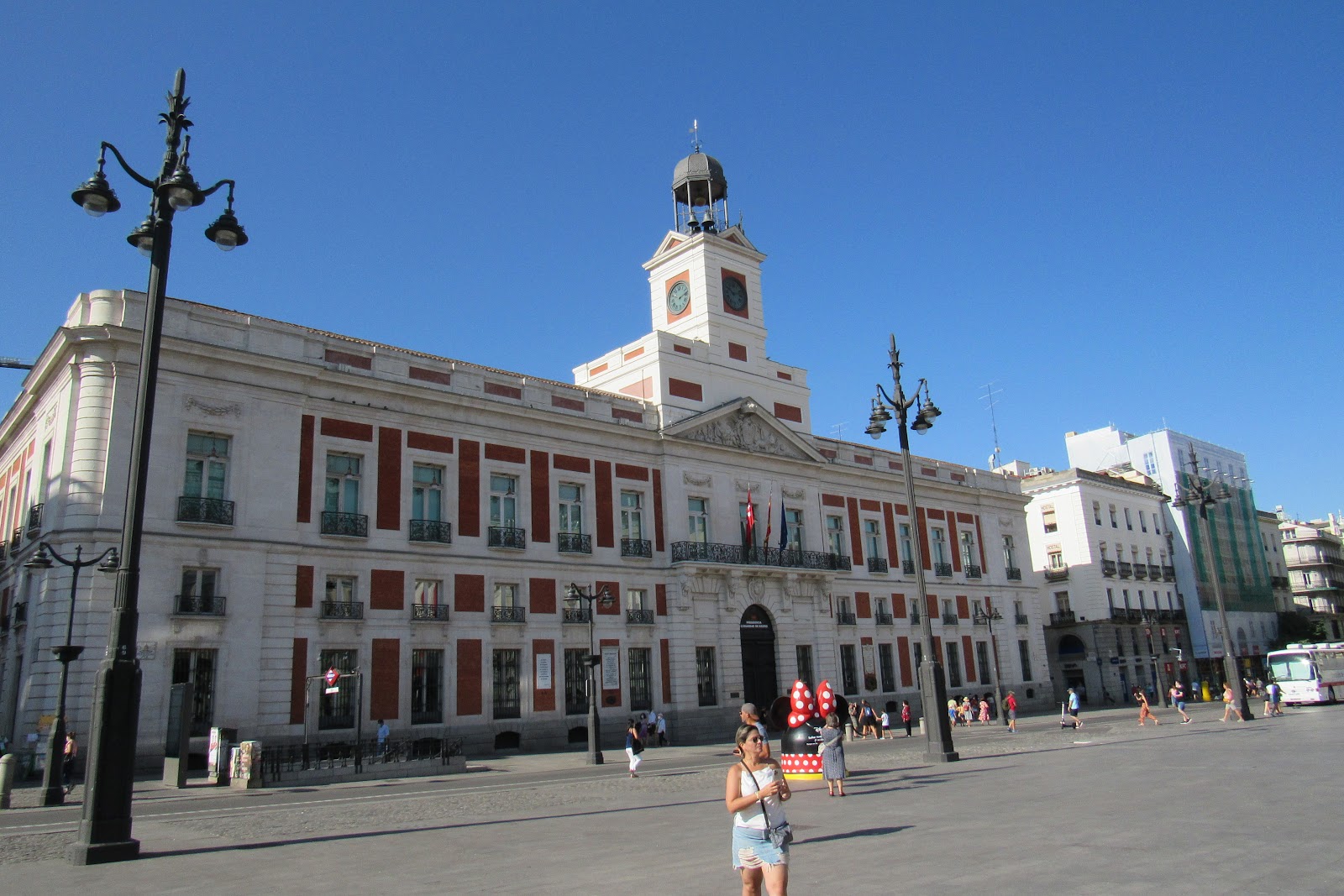
Puerta del Sol (Source: Google Maps)
Puerta del Sol is not just a square; it is the very heart of Madrid, a bustling hub that has been the site of numerous historical events throughout the centuries. Originally a gate in the city walls, it has evolved into a symbol of the city itself. The square features the iconic statue of the Bear and the Strawberry Tree, which is the emblem of Madrid. Additionally, the famous clock tower at Casa de Correos marks the New Year's Eve tradition where locals gather to eat twelve grapes at midnight. Surrounded by shops and restaurants, Puerta del Sol serves as a vibrant meeting point for both locals and tourists. Its historical significance is palpable, having been a witness to many important events, including protests and celebrations, making it an essential starting point for anyone looking to delve into Madrid's rich history.
Plaza Mayor
Just a short walk from Sol, Plaza Mayor is a grand square dating back to the 17th century, known for its stunning architecture and historical significance as the site of markets, bullfights, and public executions.
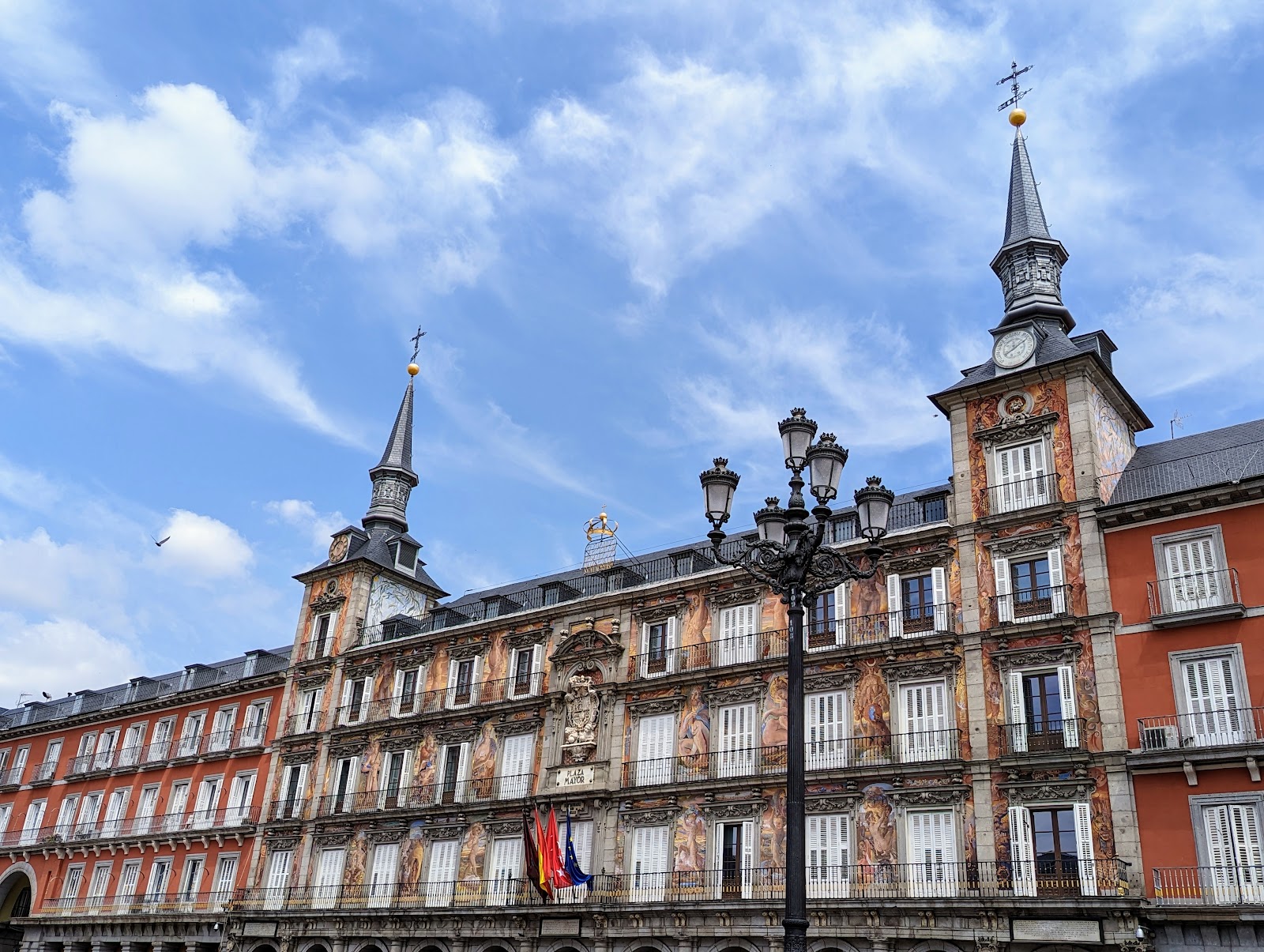
Plaza Mayor (Source: Google Maps)
Plaza Mayor is a magnificent square that dates back to the early 17th century, originally built as a central marketplace. Known for its stunning architecture, the square is framed by uniform residential buildings with picturesque balconies that create a harmonious atmosphere. It has served various purposes over the centuries, from hosting bullfights and royal celebrations to being the site of public executions. The square is adorned with a statue of King Philip III on horseback, which adds to its royal charm. Today, Plaza Mayor is a bustling area filled with cafes, shops, and street performers, inviting visitors to enjoy the vibrant ambiance while reflecting on its historical significance as the heart of Madrid's social life.
Mercado de San Miguel
This historic market, close to Plaza Mayor, offers a glimpse into Madrid's culinary past, housed in a beautiful iron structure from the early 20th century.

Mercado de San Miguel (Source: Google Maps)
Almudena Cathedral
Walking towards the Royal Palace, the Almudena Cathedral stands as a symbol of Madrid's religious history, blending Gothic revival and neoclassical styles.
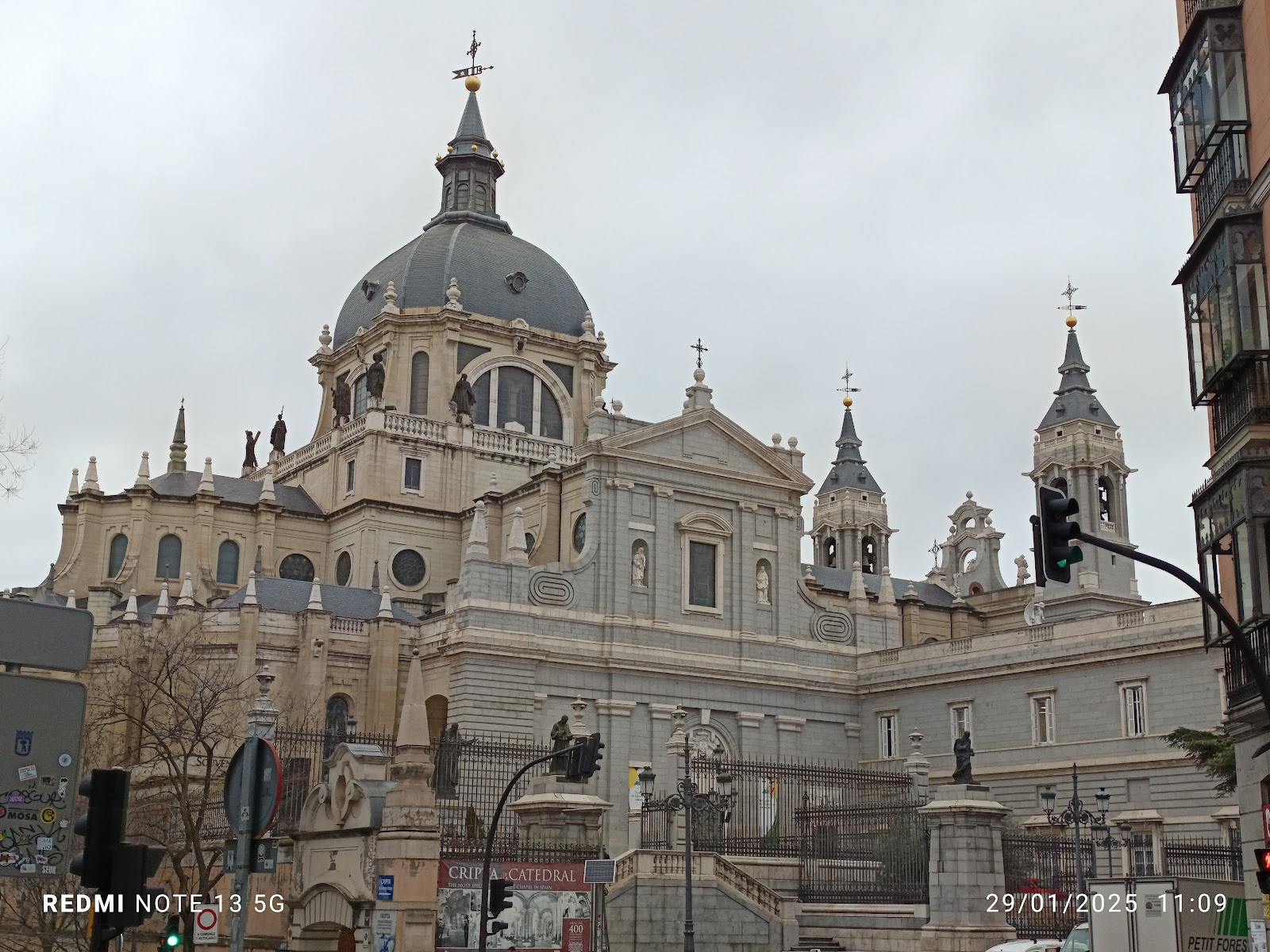
Almudena Cathedral (Source: Google Maps)
Almudena Cathedral stands as a remarkable testament to Madrid's religious history and architectural evolution. It was consecrated by Pope John Paul II in 1993, marking it as the first cathedral to be built in Spain since the 16th century. The cathedral's design is a fascinating blend of Gothic revival and neoclassical styles, showcasing a unique aesthetic that reflects the various influences over its long construction period, which began in the late 19th century. The interior is equally impressive, featuring stunning stained glass windows that illuminate the space with vibrant colors. Almudena Cathedral serves not only as a religious site but also as a symbol of Madrid's cultural identity, attracting visitors who come to appreciate its beauty and significance in the city's spiritual landscape.
Royal Palace of Madrid
As the official residence of the Spanish royal family, the Royal Palace is a magnificent example of Baroque architecture and a key site in understanding the monarchy's influence on Spanish history.
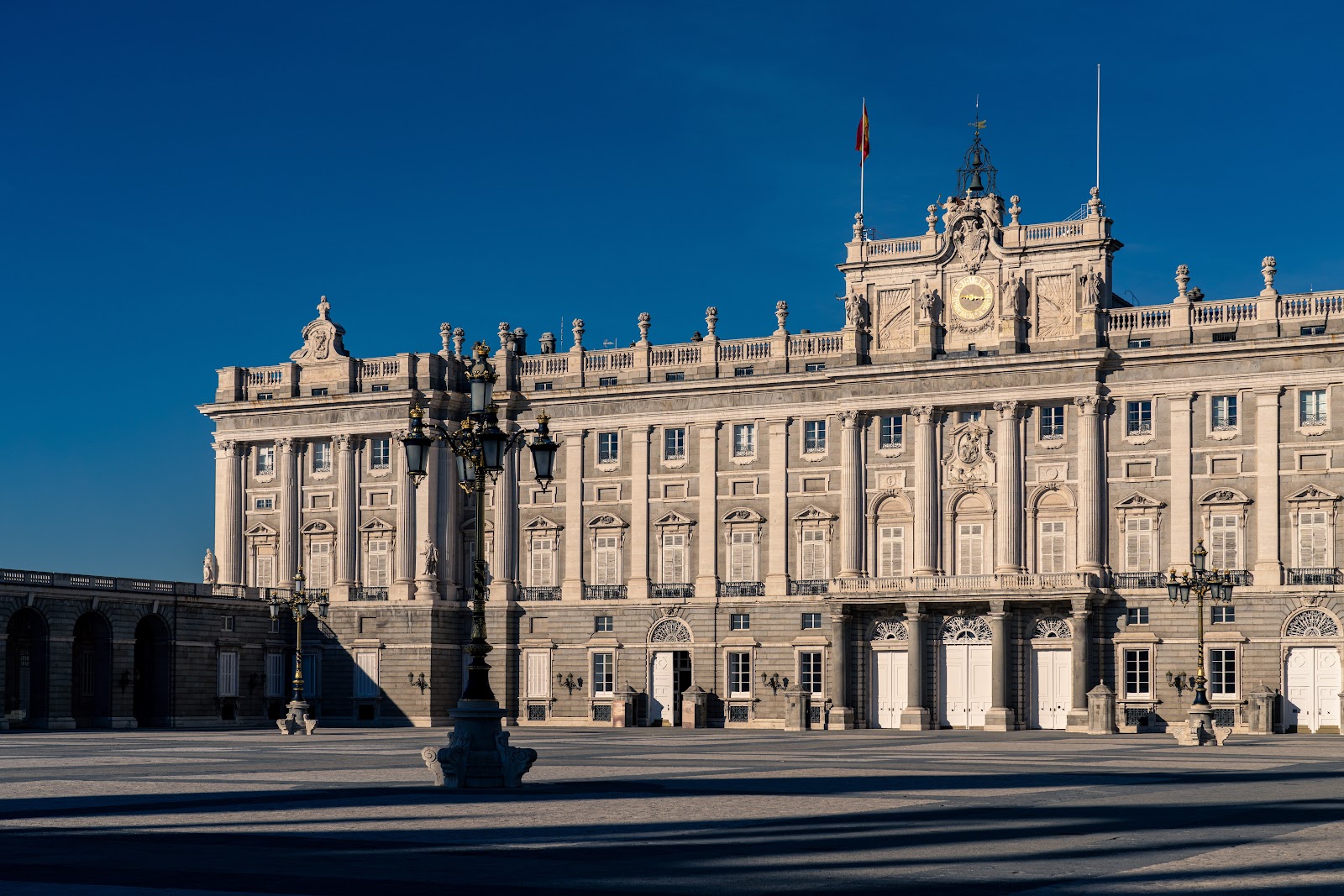
Royal Palace of Madrid (Source: Google Maps)
The Royal Palace of Madrid is an architectural marvel and the official residence of the Spanish royal family. Built in the 18th century, it showcases the grandeur of Baroque architecture with its opulent façade and lavish interiors. The palace boasts over 3,000 rooms, many of which are open to the public, allowing visitors to explore the rich history and art housed within its walls. The Throne Room, with its stunning chandeliers and intricate decor, is particularly noteworthy. The palace is not only a royal residence but also a cultural landmark, hosting official ceremonies and events. Its gardens, the Sabatini Gardens, provide a serene escape with beautifully manicured landscapes. The Royal Palace is a key site for understanding the monarchy's influence on Spain's history, making it a must-visit for anyone interested in the country's royal heritage.
Plaza de Oriente
Located adjacent to the Royal Palace, Plaza de Oriente is a historic square surrounded by statues of Spanish kings, offering insights into the country's regal past.
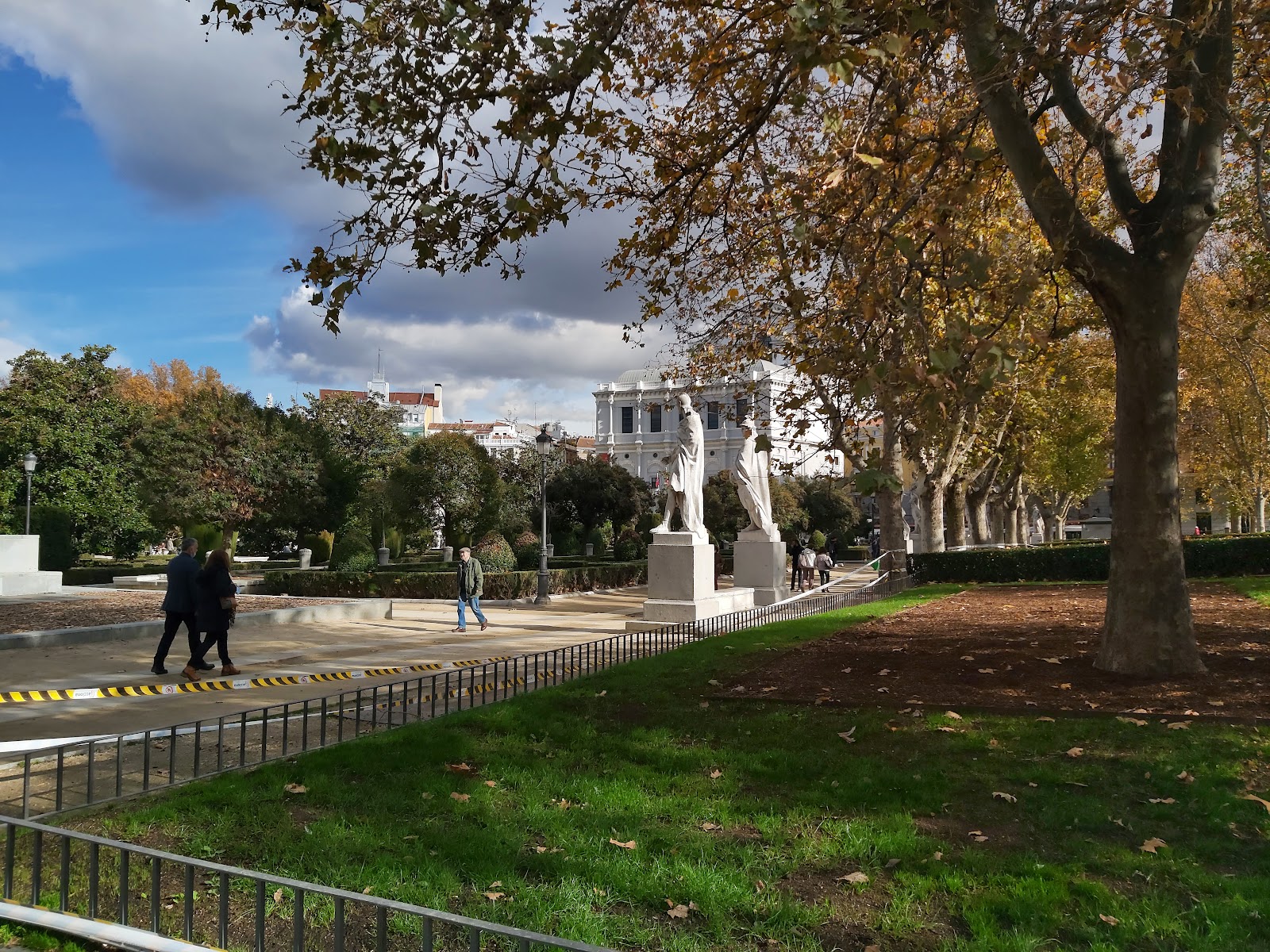
Plaza de Oriente (Source: Google Maps)
Plaza de Oriente is a historic square that gracefully complements the Royal Palace, offering a glimpse into Spain's regal past. Surrounded by beautifully landscaped gardens and statues of Spanish kings, the square serves as a tranquil oasis in the bustling city. The design of the plaza is characterized by its elegant layout, featuring wide walkways and impressive fountains that enhance its aesthetic appeal. It is a popular spot for both locals and tourists, providing a perfect backdrop for leisurely strolls and photographs. The square also hosts various cultural events and performances, enriching the community's cultural fabric. Plaza de Oriente's significance lies not only in its architectural beauty but also in its role as a gathering place that celebrates Madrid's royal history.
Teatro Real
Across from Plaza de Oriente, the Teatro Real is one of Europe's major opera houses, with a history dating back to the mid-19th century, reflecting Madrid's cultural evolution.
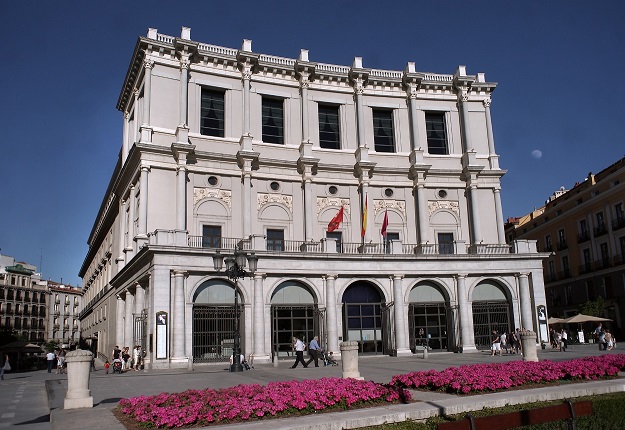
Teatro Real (Source: Google Maps)
Teatro Real, located across from Plaza de Oriente, is one of Europe's major opera houses, renowned for its rich history and cultural contributions. Opened in 1850, the theatre has undergone several renovations, enhancing its acoustics and overall experience for patrons. The neoclassical façade is stunning, while the interior boasts opulent decor, including a grand chandelier and plush seating. Teatro Real is home to the Spanish National Opera, showcasing a diverse repertoire that attracts opera enthusiasts from around the world. Beyond opera, it hosts ballets and concerts, making it a cultural hub in Madrid. The theatre's historical significance is evident in its role as a center for artistic expression and its contribution to the cultural evolution of the city, making it a landmark worth exploring for anyone interested in the performing arts.
Plaza de la Villa
Concluding our tour at Plaza de la Villa, this charming medieval square is home to some of Madrid's oldest buildings, including the former town hall, showcasing the city's governance history.
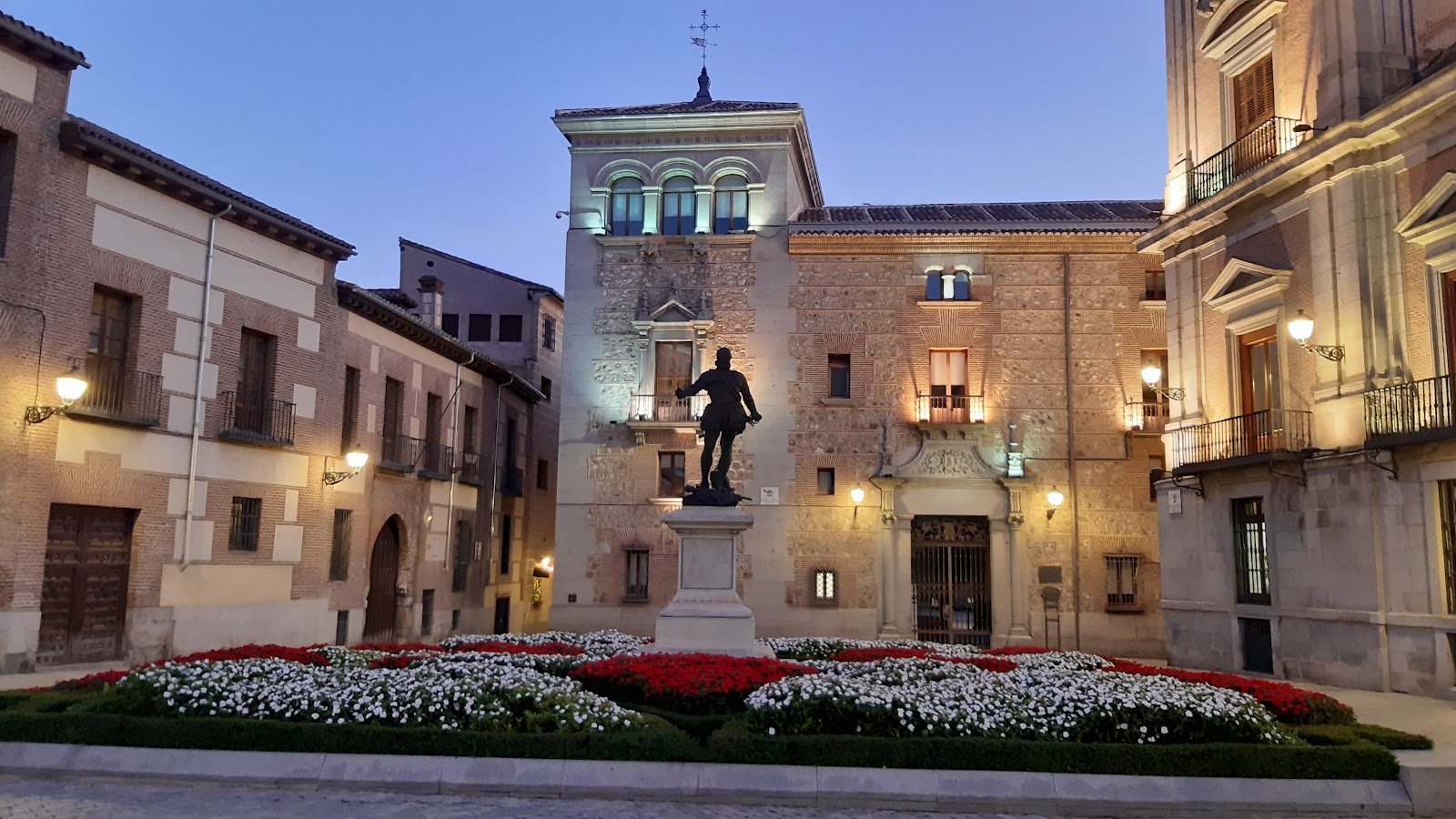
Plaza de la Villa (Source: Google Maps)
Plaza de la Villa is a charming medieval square that encapsulates the historical essence of Madrid. It is one of the oldest squares in the city, surrounded by some of Madrid's most significant historical buildings, including the former town hall. The square's architecture reflects various styles, from the Gothic to the Renaissance, showcasing the city's architectural evolution over the centuries. Notable structures include the Casa de la Villa, which served as the town hall until the late 20th century, and the Torre de los Lujanes, a tower that dates back to the 15th century. Plaza de la Villa is not only a picturesque spot for visitors but also a living testament to Madrid's governance history, providing insights into the city's past and its development into a modern metropolis.

Your travels, your rules.
Create your own Free Walking Tours.
Set your preferences, distances and anything you want to do or see.
Completely free, no payment required.